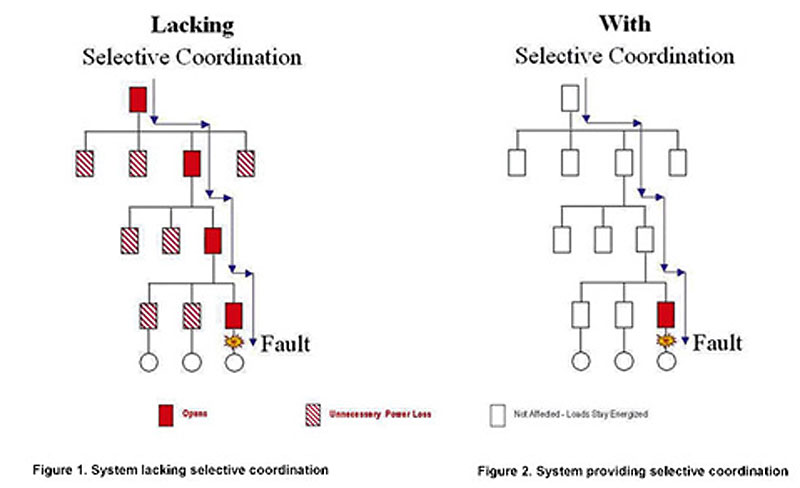Selective Coordination
The term “selective coordination” refers to the selection and setting of protective devices (circuit breakers and fuses) in an electric power system in such a manner as to cause the smallest possible portion of the system to be de-energized due to an abnormal condition.
The NFPA 70 – the National Electrical Code (NEC) uses a more restricted definition of selective coordination as follows: “Localization of an overcurrent condition to restrict outages to the circuit or equipment affected, accomplished by the choice of overcurrent protective devices and their ratings or settings.”
The most commonly encountered abnormal condition is an overcurrent, defined by the NEC as “any current in excess of the rated current of equipment, or the ampacity of a conductor.”
The concept of selective coordination is best illustrated by example. In the example system of Fig. 1, all of the devices shown are overcurrent protective devices, in this case circuit breakers.

